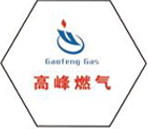
8 月 . 14, 2024 12:36
Back to list
Understanding Pressure Vessels Their Importance, Design, and Applications in Various Industries
Understanding Pressure Vessels Safety and Efficiency in Engineering
Pressure vessels are specialized containers designed to hold gases or liquids at a pressure substantially different from the ambient pressure. These structures are integral to many industries, including oil and gas, chemical manufacturing, and power generation. Understanding the critical aspects of pressure vessel design, operation, and safety is essential for engineers and operators alike.
Definition and Purpose
A pressure vessel can be defined as a container that can hold contents under internal or external pressure. These vessels can arise in different forms, such as cylindrical, spherical, or conical shapes. Their primary function is to safely contain substances, which might be hazardous, explosive, or corrosive, while simultaneously being subjected to high pressure. Familiar examples include the tanks used in chemical reactors, gas storage, and even domestic appliances like pressure cookers.
Design Considerations
The design of pressure vessels involves meticulous engineering to ensure safety and functionality. Key factors include material selection, wall thickness, and the container's shape. Materials must resist various phenomena such as corrosion, stress, and deformation. Common materials used include carbon steel, stainless steel, and specialized composites, depending on the operational environment and substance contained.
.
Safety Regulations and Standards
وعاء الضغط

Given the potential hazards associated with pressure vessels, strict regulations govern their design, construction, maintenance, and inspection. These regulations are outlined by organizations like the ASME, the International Organization for Standardization (ISO), and various local authorities. All pressure vessels must be designed to withstand specific load conditions and undergo rigorous testing, including hydrostatic testing, to validate their integrity before being put into service.
Regular inspections are mandated to ensure ongoing safety. These inspections might include non-destructive testing methods such as ultrasonic testing, radiography, or magnetic particle testing, allowing engineers to identify potential weaknesses or defects without compromising the vessel’s integrity.
Challenges and Innovations
Despite stringent safety measures, pressure vessels still face numerous challenges, including material fatigue, corrosion, and the risk of catastrophic failure. Engineers continuously seek innovative solutions, employing advanced materials and new technologies in design and monitoring. For example, the integration of sensors and the Internet of Things (IoT) into pressure vessel monitoring allows for real-time assessments of pressure, temperature, and structural integrity, paving the way for predictive maintenance strategies.
Moreover, the push for sustainable practices has led to the exploration of greener materials and processes within the industry. Novel composites and hybrid materials are being researched to improve efficiency and reduce the environmental impact associated with traditional materials.
Conclusion
In conclusion, pressure vessels play a crucial role in many industrial processes, enabling the safe handling of high-pressure fluids and gases. Their design, construction, and regulated monitoring emphasize safety and efficiency, protecting both users and the environment. As technology evolves, the engineering of pressure vessels will undoubtedly incorporate new materials and innovations to enhance performance and reliability, ensuring that they can continue to meet the demands of modern industry while adhering to safety standards. Understanding these vessels' complexities is vital for anyone involved in the engineering, operation, or maintenance of high-pressure systems.
Latest news
-
Unlocking The Quality Gas Pressure ReducersNewsNov.01,2024
-
The Role of Gas Pressure Reducing StationsNewsNov.01,2024
-
The Importance and Functionality of Safety Relief ValvesNewsNov.01,2024
-
The Essential Role of Safety Valves in Natural Gas ApplicationsNewsNov.01,2024
-
The Essential Role of Gas Pressure RegulatorsNewsNov.01,2024
-
Enhance Your Premium Gas FiltersNewsNov.01,2024

